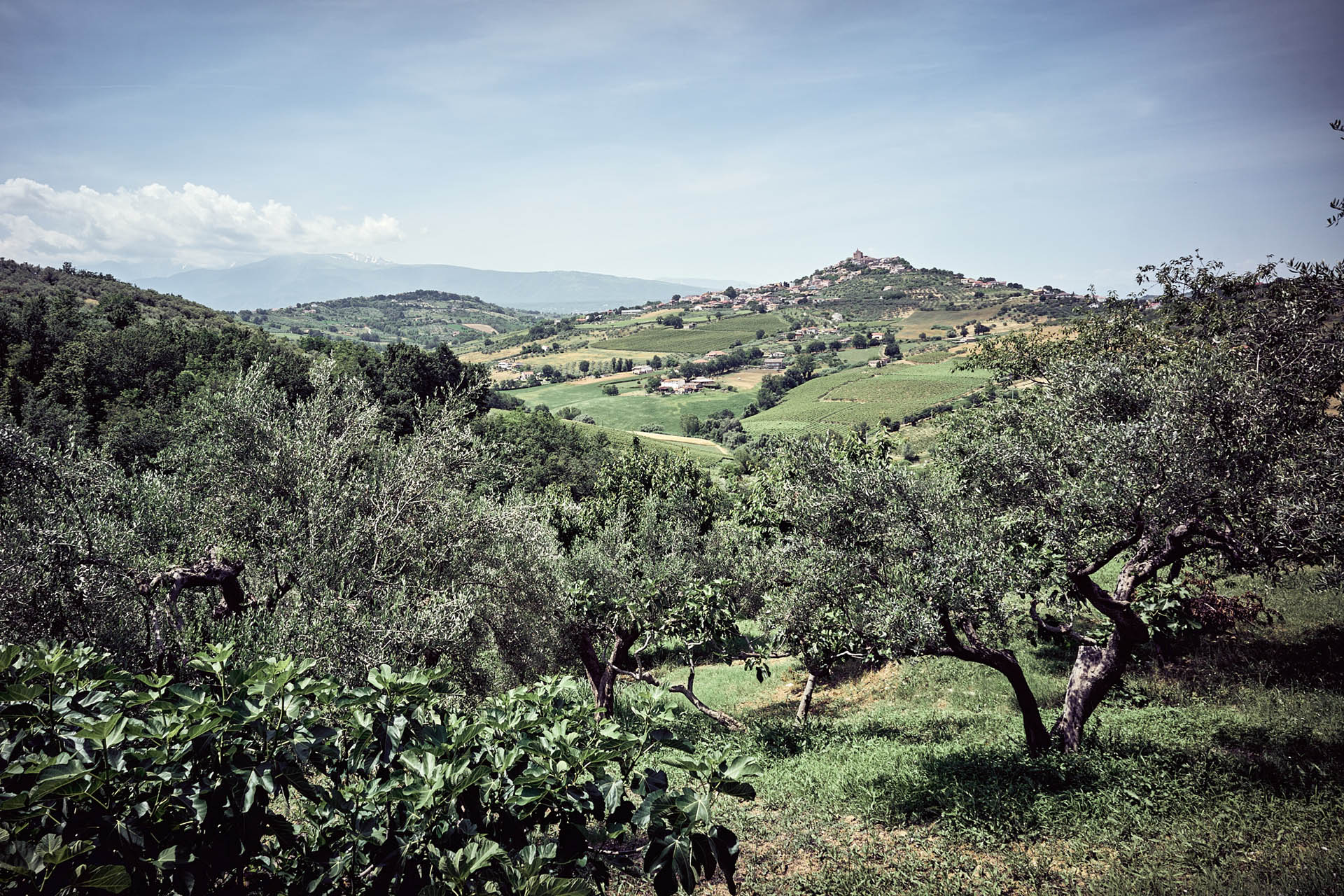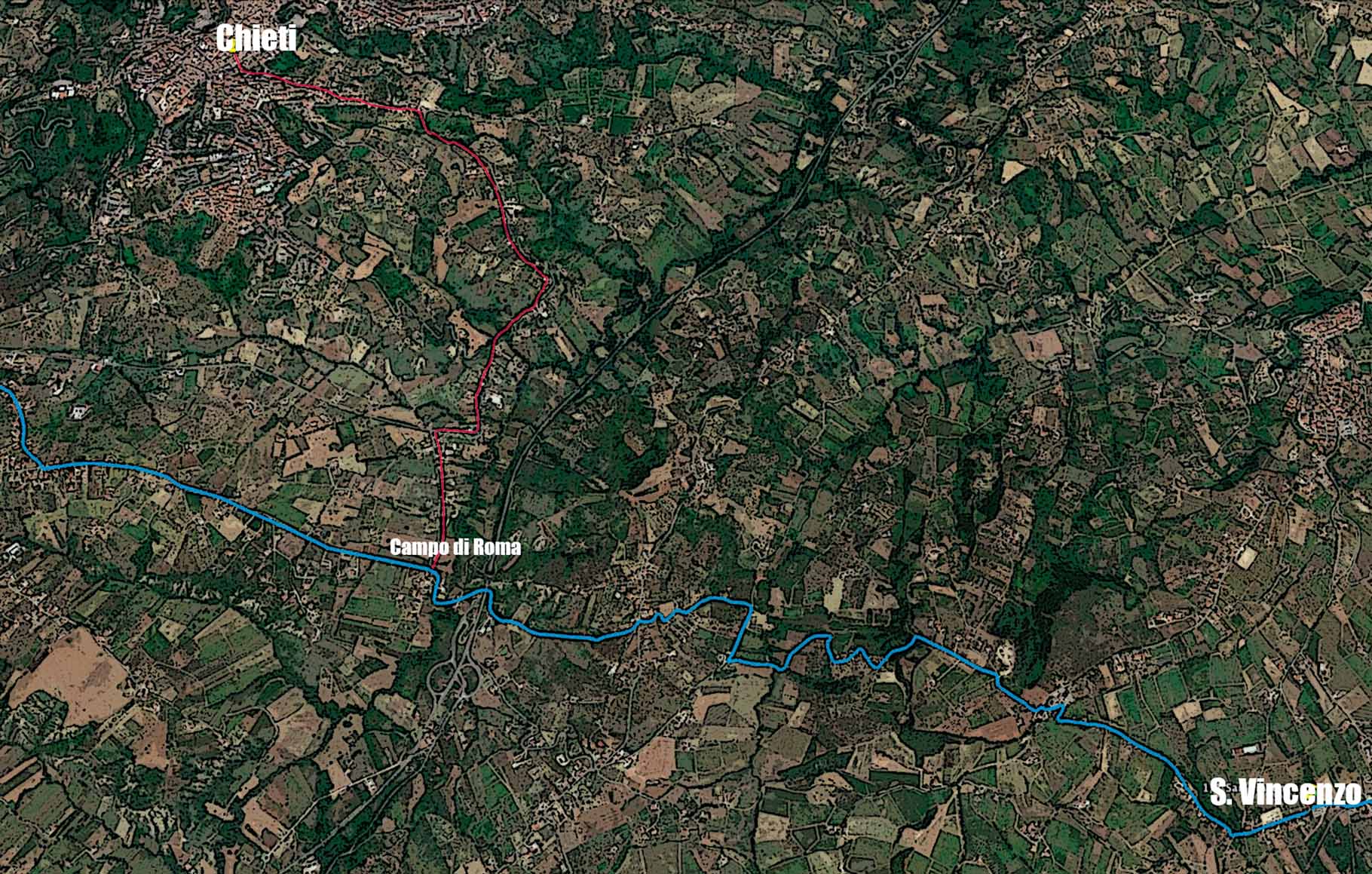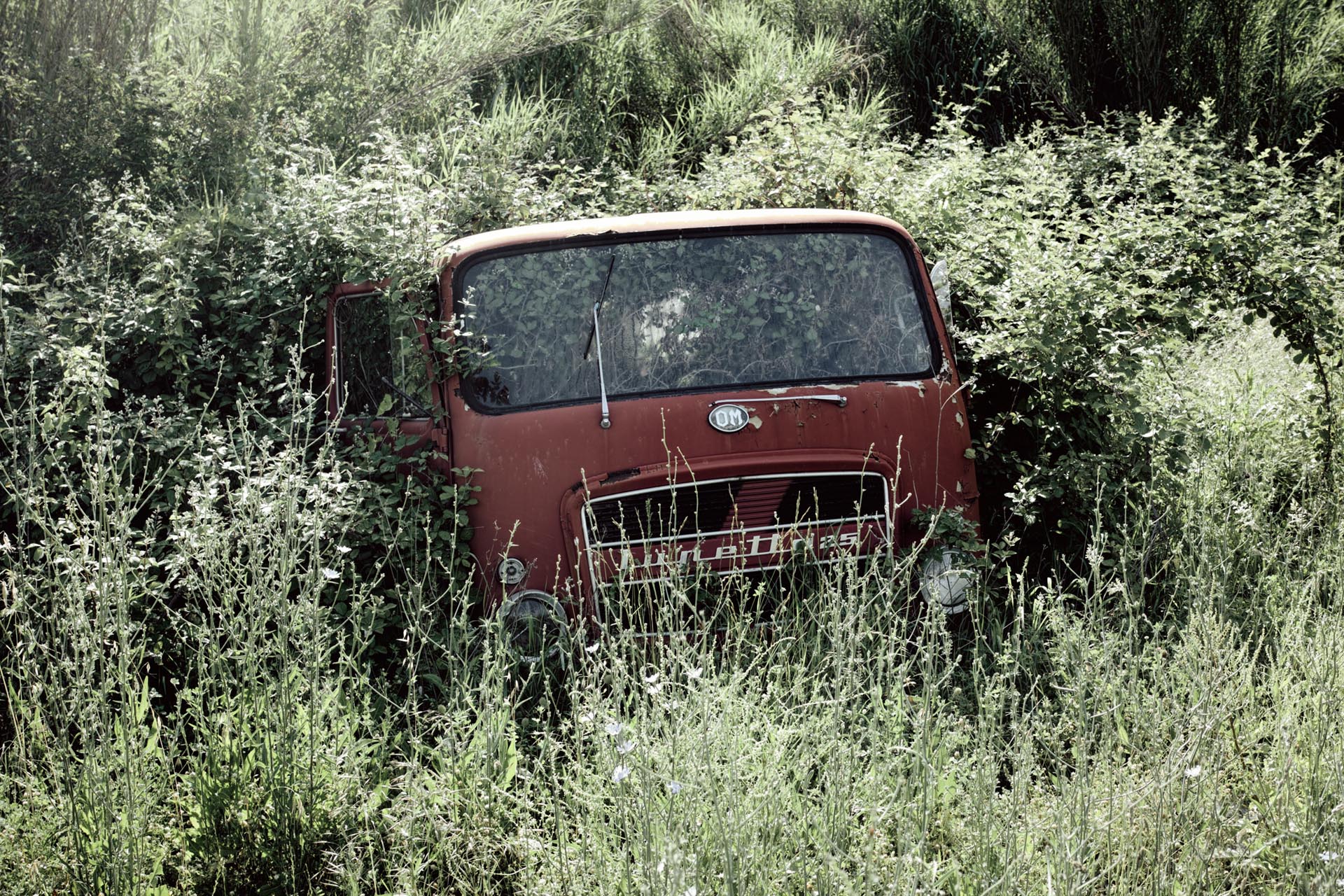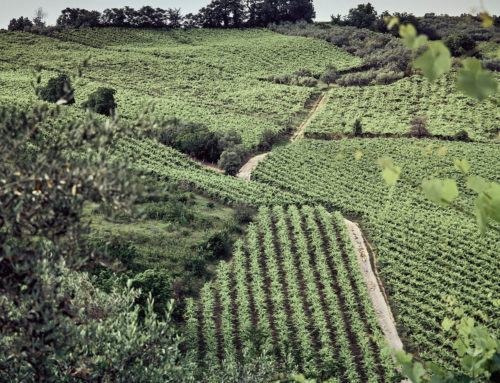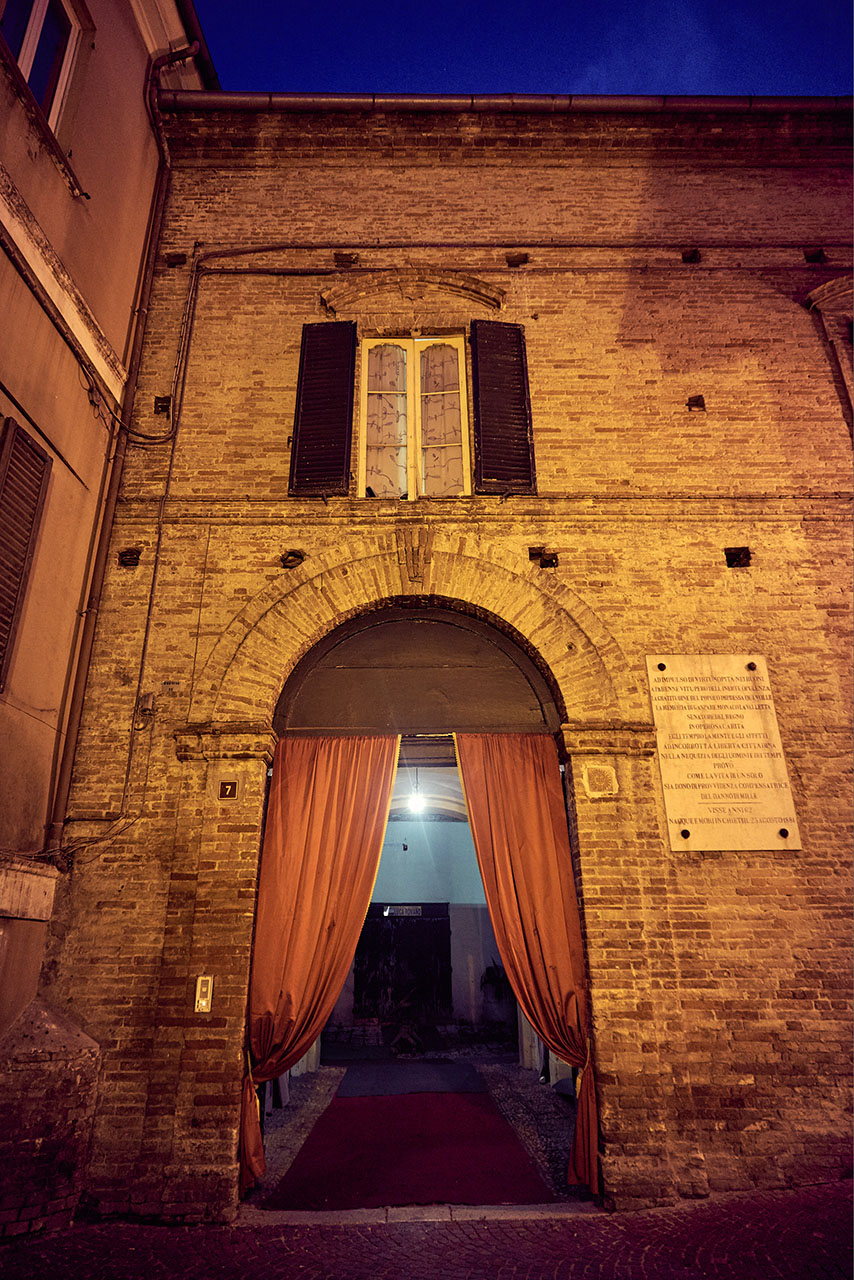 At dawn on a weekend day, the historical center of Chieti is reminiscent of a large deserted theater, with the spectacular stage of Corso Marrucino providing the backdrop. This is where we start, leaving the city and going down the hills towards the southwest on the stairways and paths through the surrounding area of the city that quickly opens up into the countryside. In front of us on the other side of the valley we see the first of a long series of hills extending from the mountains to the sea, separated by the valleys, where we will descend and then ascend again: five times today, before reaching our next stopping point, Canosa Sannita.
At dawn on a weekend day, the historical center of Chieti is reminiscent of a large deserted theater, with the spectacular stage of Corso Marrucino providing the backdrop. This is where we start, leaving the city and going down the hills towards the southwest on the stairways and paths through the surrounding area of the city that quickly opens up into the countryside. In front of us on the other side of the valley we see the first of a long series of hills extending from the mountains to the sea, separated by the valleys, where we will descend and then ascend again: five times today, before reaching our next stopping point, Canosa Sannita.
The Tratturo del Re, or Tratturo Magno, unwinds around Chieti to the south, between the Strada Fosso dell’Inferno and Colle Marcone. We left it to move up towards the city, and find it again now on our descent, at Contrada Campo di Roma. We have marked the trail on the map and must pay attention to it to not lose our way, because here where the trail blends in with the paved roads it is unrecognizable. But as soon as we get past the bridge at the bottom of the valley and start on a carriage road that moves up along the opposite slope, things change. We hear the barking of dogs from a kennel, and then nothing, only a trail that runs up the hillside between deserted fields and wild vegetation. Here is the trail! But every now and then it disappears, covered by grass and shrubs, so much so that we get lost and have to forge on through wild lands. But soon we understand: once you start the Tratturo, there is only one direction, even if you cannot see it: straight ahead!
And so we ramble on through orchards and vineyards in Contrada Pantanella and descend the opposite slope until reaching a shady valley, where we stop to catch our breath. The heat is already intense, with only a few breaks at muddy springs, which don’t offer much refreshment. We continue up the steep slope and meet two farmers working the land. “Where are you headed?” “We are following the Tratturo.” “Very good, it passes right through here, but I am not sure if you will be able to always find it the farther you go. Up there is a house with a fountain, where you can stop.”
It was a blessed stop, because this hillside seemed to go on forever. “But you are already past halfway up the ascent,” the owner of fountain encouraged us, “and on the top you will see Contrada Piana, a name that should already make you happy. You can see the sea from up there.” And we really could see the sea, on the horizon towards the northeast, but not the coast where we were headed, which is much farther away, straight ahead of us.
At the end of a large plateau, the Trattura path enters a farm and once again moves down the valley, through an endless stream of vineyards. The proprietor confirms that we are on the right path, and wishes us well. Down in the valley, even though we can’t see it yet, sits the San Vincenzo church. It was definitely a stopping place once on the ancient Tratturo del Re, and we will stop there as well for lunch.
